Strumpshaw Fen Woodland Stemonitis on fallen trunk near The Outpost – Summer 2024
In the course of writing this post I have come across some new slime mould terminology – primordium/primordia, sporotheca and sporulation [1] – and it has been a little frustrating trying to make some sense of these terms in the context of general slime mould terminology I have come across in other publications.
A sporangium is one of four types of fruiting bodies and can stalked or sessile – Stemonitis form stalked sporangia. A stalked sporangium will consist of a hypothallus (a structure that attaches the sporangium to the substate), a stalk and the spore bearing part comprising the columella (if present is an extension of the stalk), capillitium (a network of threads), spores and the peridium (a structural wall enclosing the spores). [2]
Primordium – it seems this is a word that is used for the early stage of sporangium formation from the plasmodium.
Sporotheca – this is the actual spore bearing part of a slime mould also known as sporophore, sporocyst, spore case, or fructification. So a sporotheca is part of the sporangium.
Sporulation – this is the development of a slime mould from plasmodium to a mature spore bearing fruiting body.
In June and August we saw some exciting Stemonitis displays at the fallen trunk where we discovered the spectacular Badhamia utricularis.
Early June on the broken section of the fallen trunk.
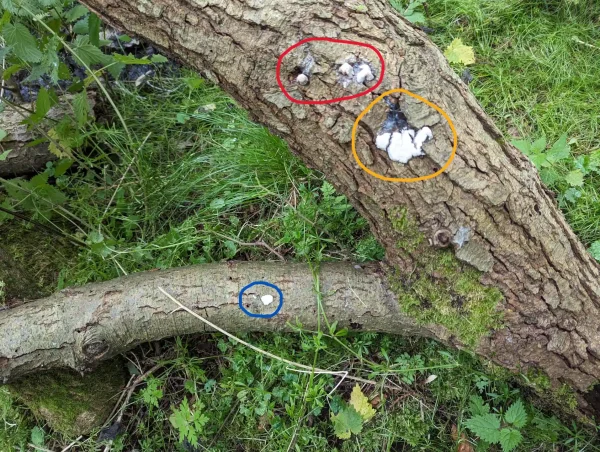
Circled in blue above and close up below is a small coralloid plasmodium at the beginning of sporulation on the verge of forming distinct primordia.
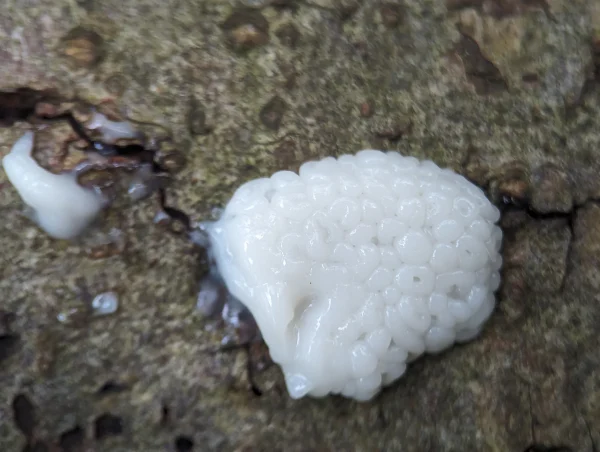
Strumpshaw Fen – 2nd June 2024
The other groupings – the large cluster left below and three small clusters to the right, circled orange and red respectively in the first photo above.
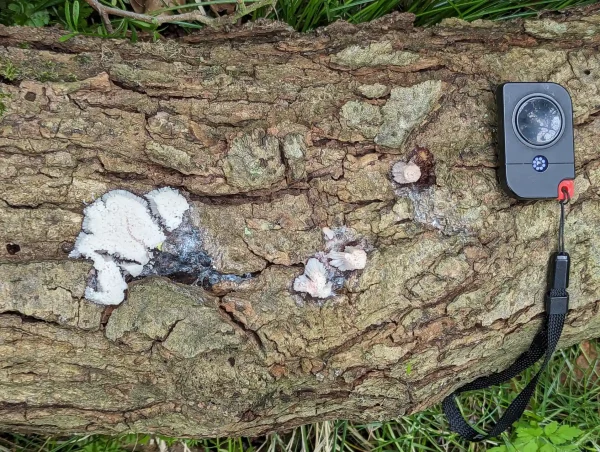
The larger cluster is undergoing primordial elongation forming the sporangia.
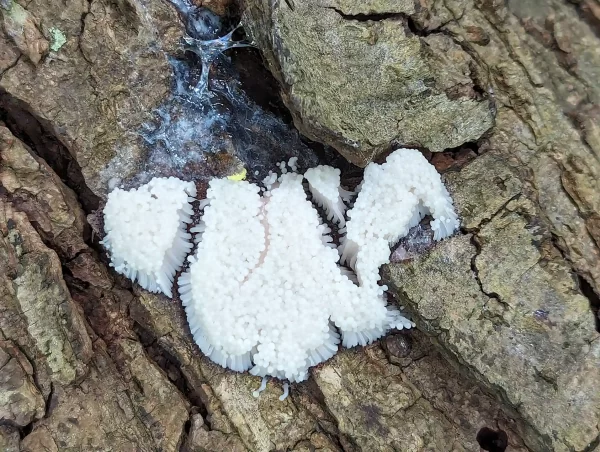
Strumpshaw Fen – 2nd June 2024
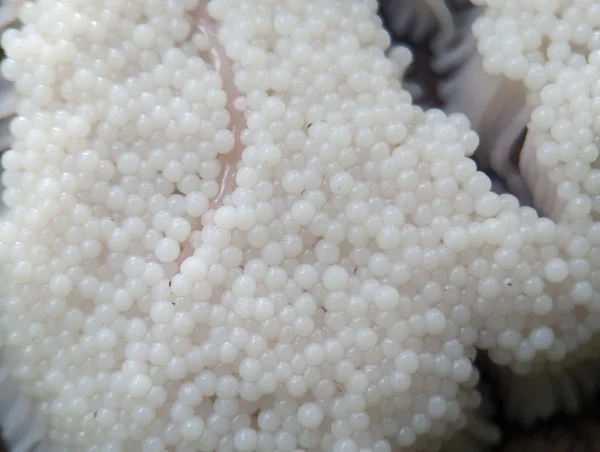
Strumpshaw Fen – 2nd June 2024
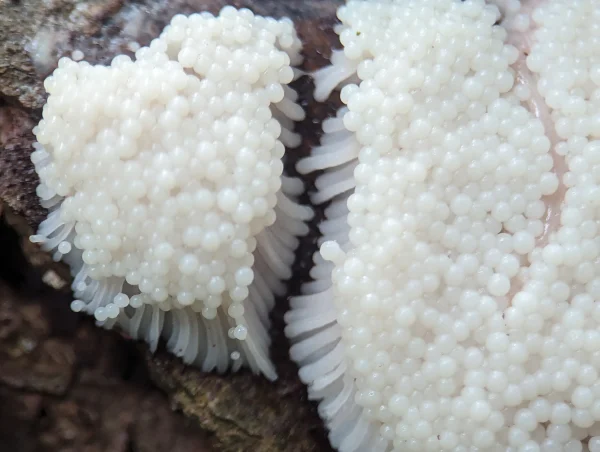
Strumpshaw Fen – 2nd June 2024
The three smaller clusters of sporangia are more mature with hints of orange-brown.
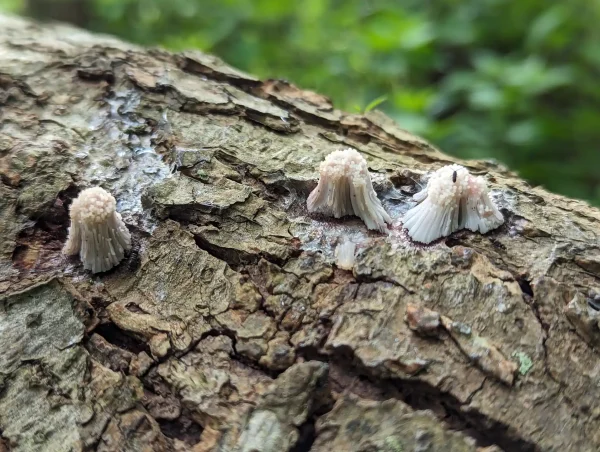
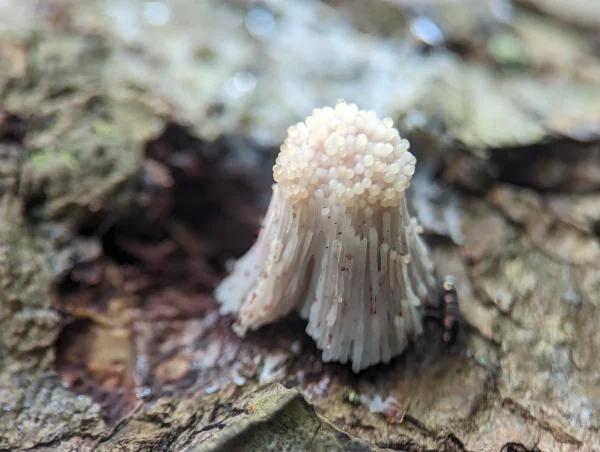
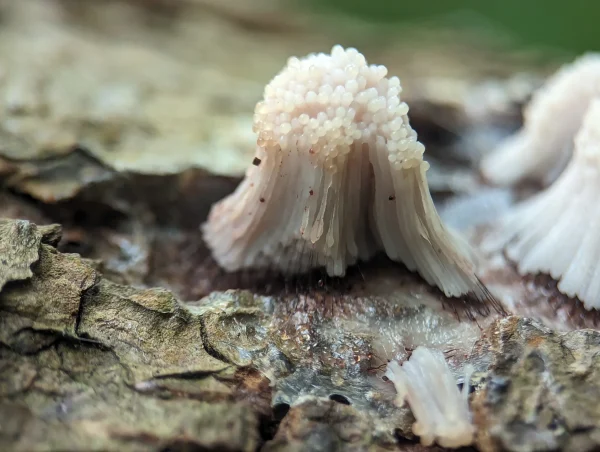
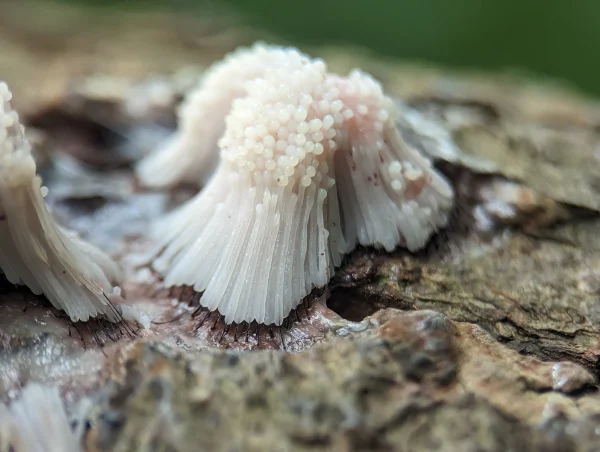
A week later the clusters were tangled, flattened masses of mature sporangia and sporangia debris.
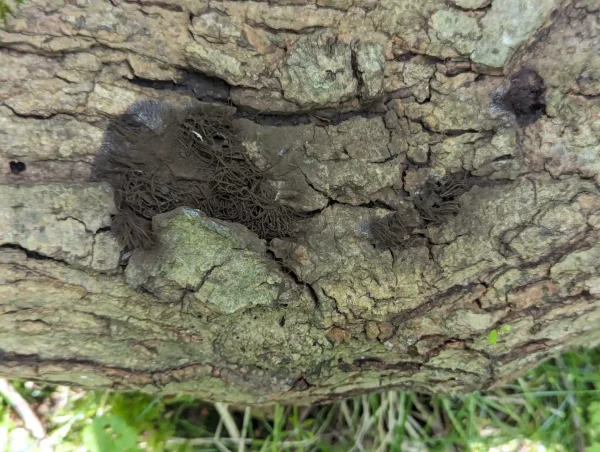
Strumpshaw Fen – morning 9th June 2024
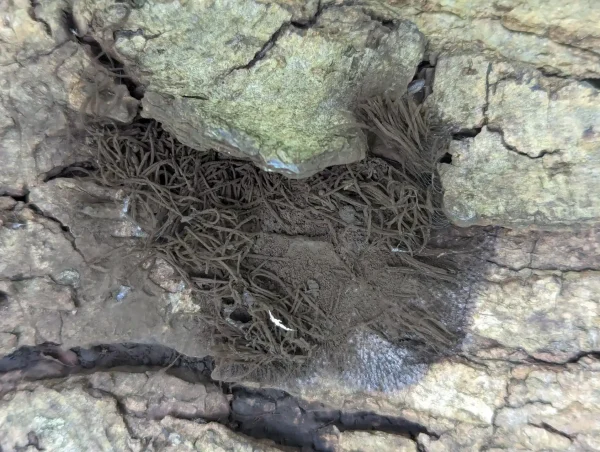
Strumpshaw Fen – morning 9th June 2024
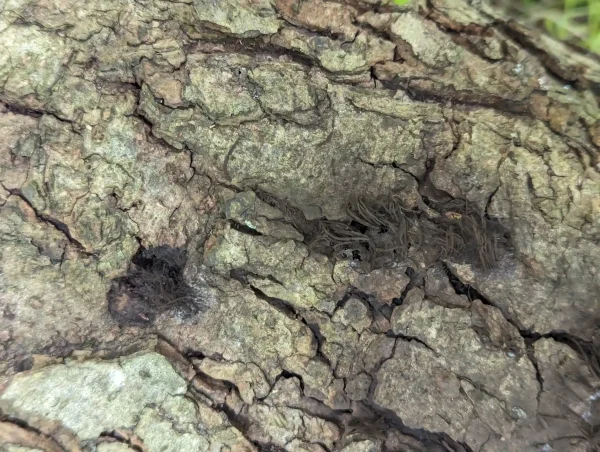
Strumpshaw Fen – morning 9th June 2024
But… on the main fallen trunk were more clusters of maturing sporangia!
This was in the morning.
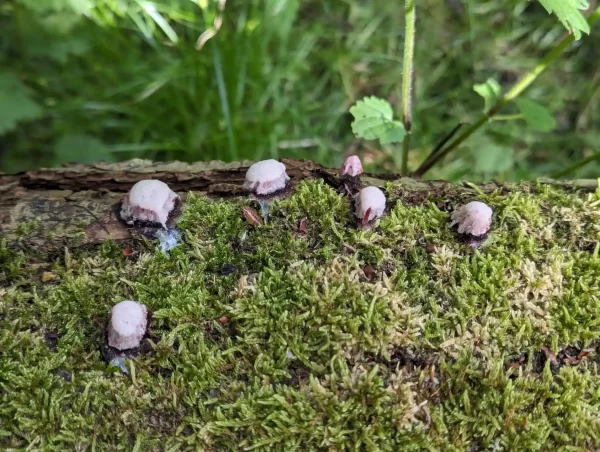
Strumpshaw Fen – morning 9th June 2024
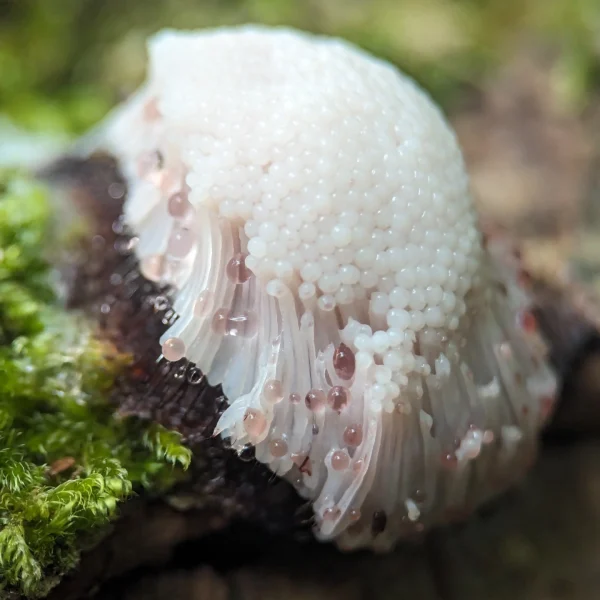
Strumpshaw Fen – morning 9th June 2024
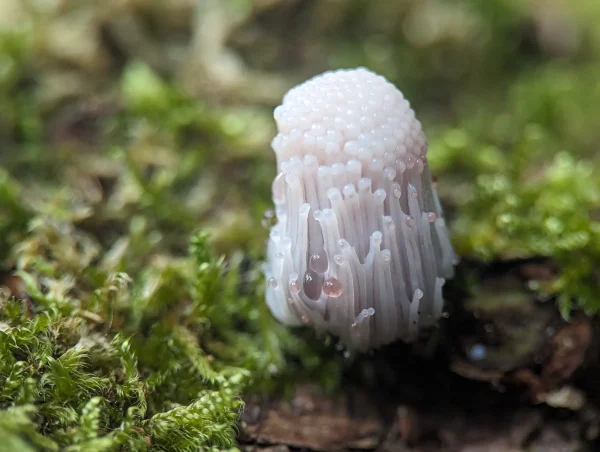
Strumpshaw Fen – morning 9th June 2024
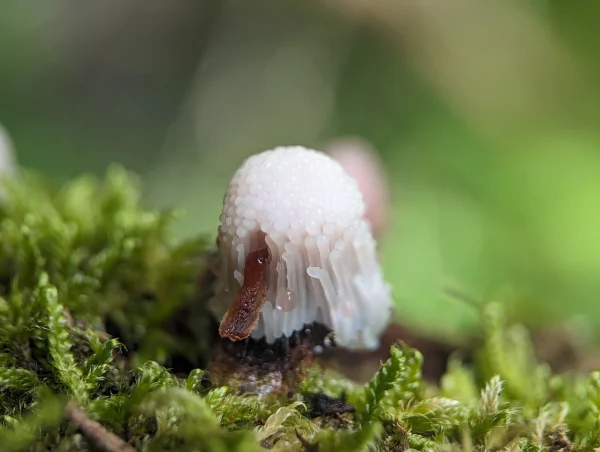
Strumpshaw Fen – morning 9th June 2024
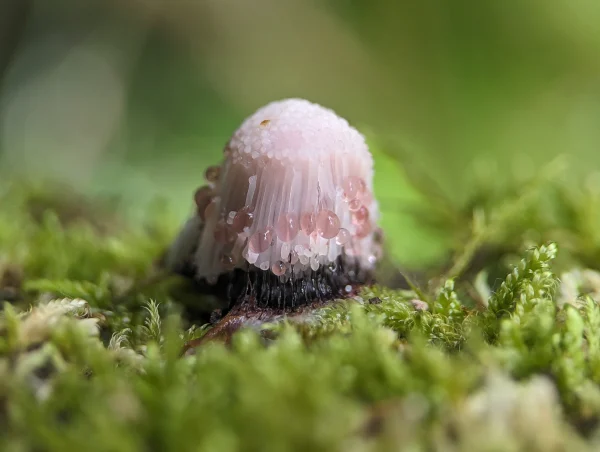
Strumpshaw Fen – morning 9th June 2024
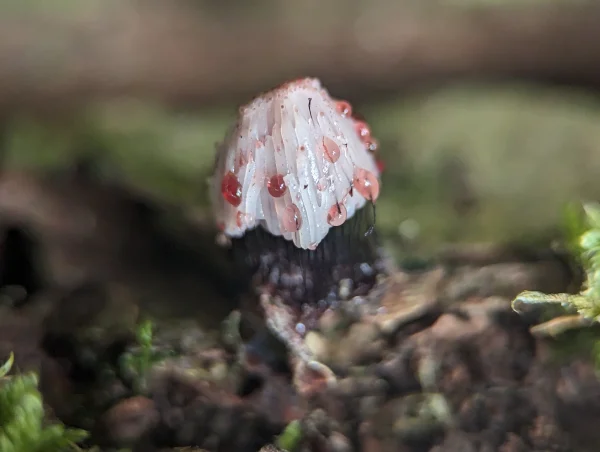
Strumpshaw Fen – morning 9th June 2024
And in the evening.
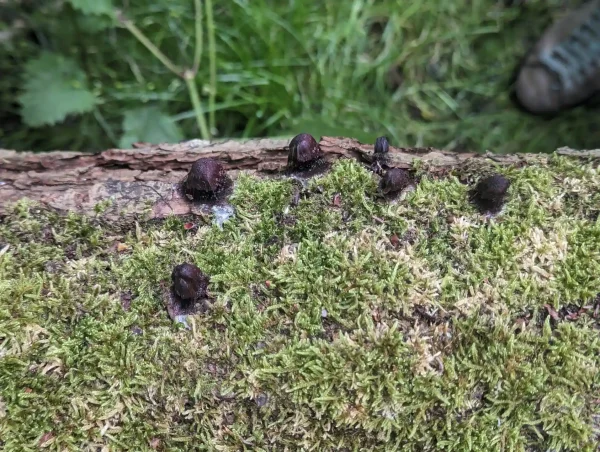
Strumpshaw Fen – evening 9th June 2024
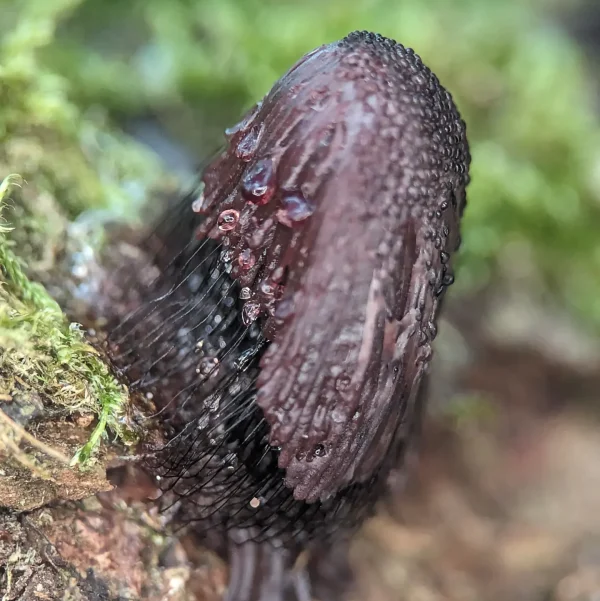
Strumpshaw Fen – evening 9th June 2024
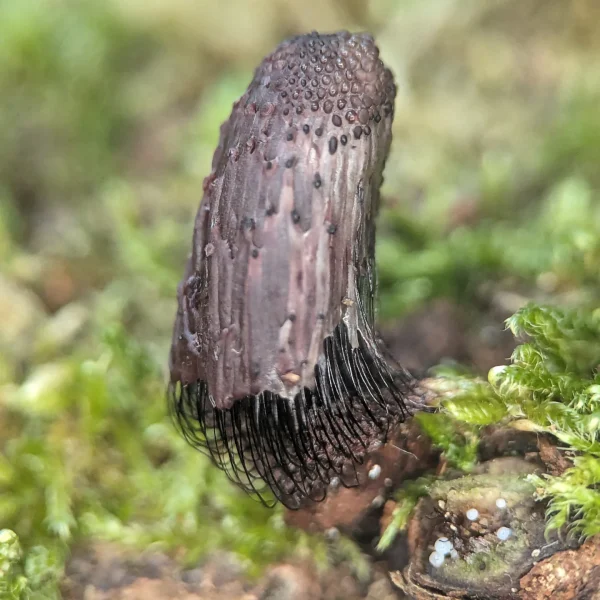
Strumpshaw Fen – evening 9th June 2024
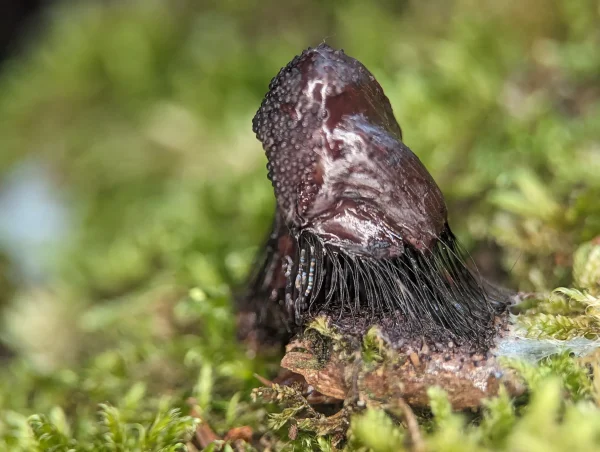
Strumpshaw Fen – evening 9th June 2024
It’s interesting that the individual sporotheca seem to have fused together but a week later – after further maturing – the sporotheca are distinct as shown in the photos below.

Strumpshaw Fen – 16th June 2024
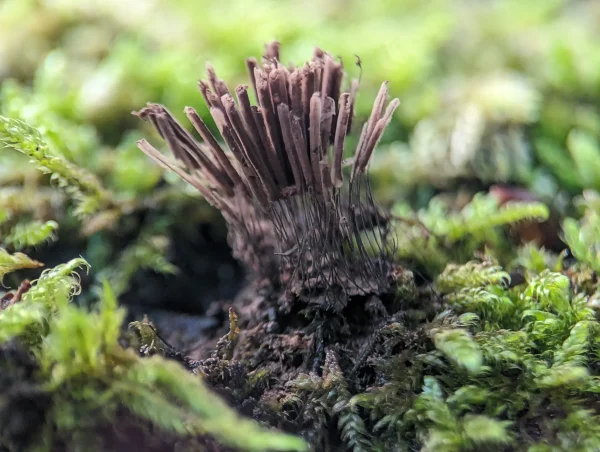
Strumpshaw Fen – 16th June 2024
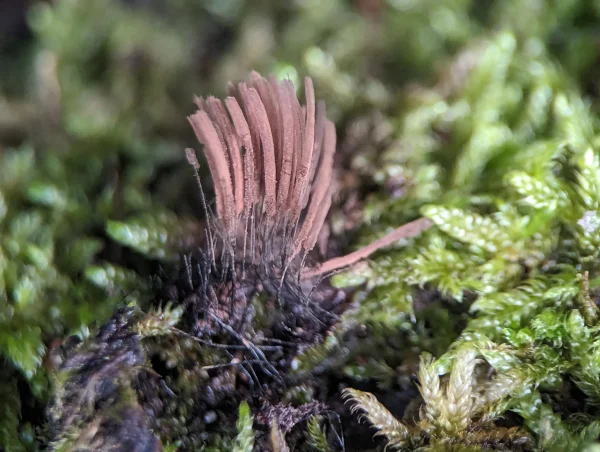
Strumpshaw Fen – 16th June 2024
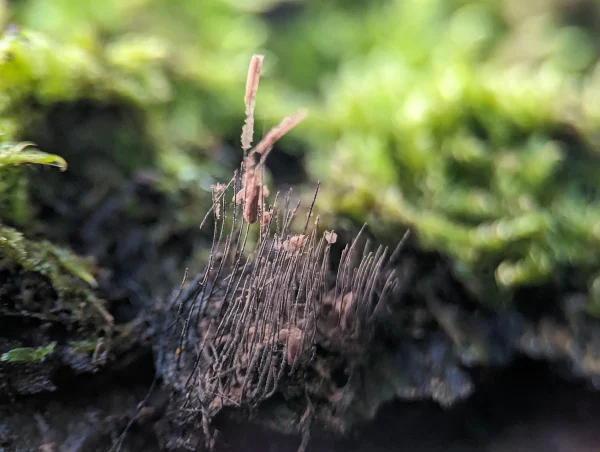
Strumpshaw Fen – 16th June 2024
Spores dispersing.
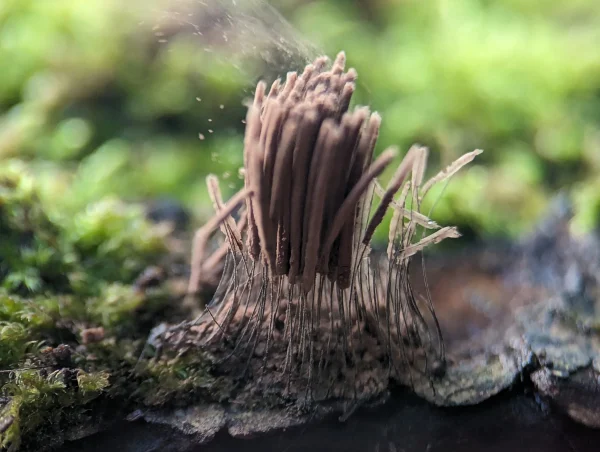
Strumpshaw Fen – 16th June 2024
This was not the end of the Stemonitis on this fallen trunk. In early August, I saw a super display of mature clusters on the underside of the trunk, but I was disappointed to have missed what would have been a wonderful display of the earlier stages of development.
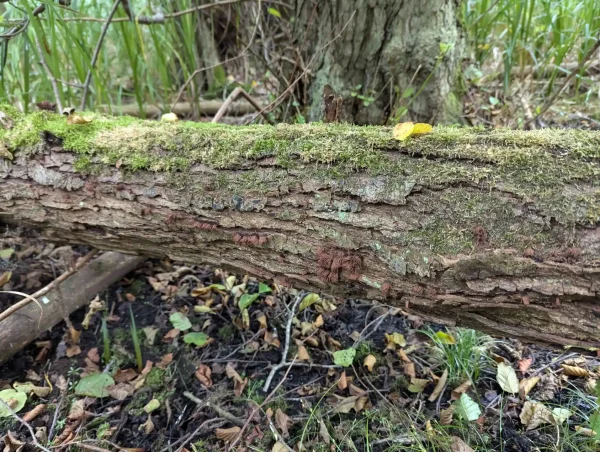
Strumpshaw Fen – 4th August 2024
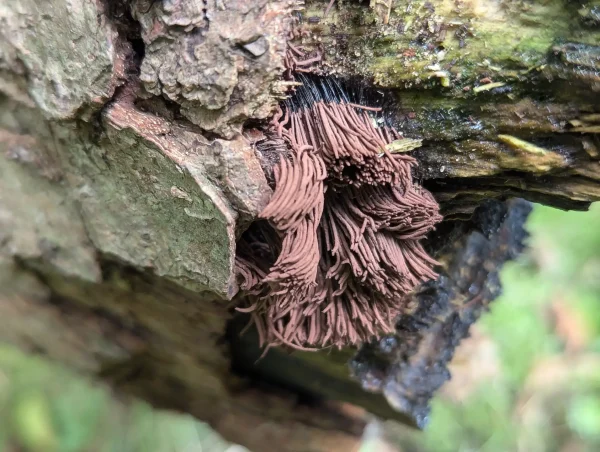
Strumpshaw Fen – 4th August 2024
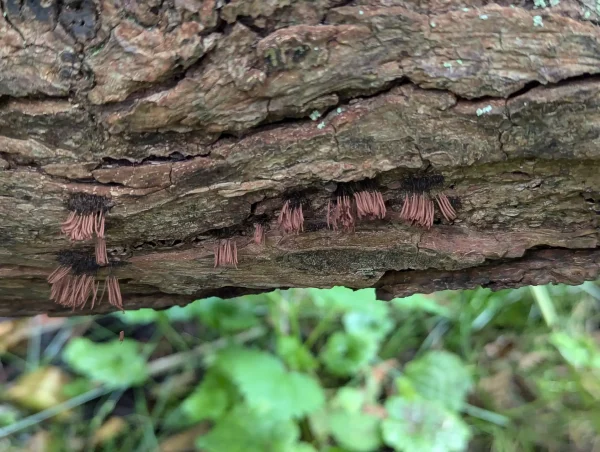
Strumpshaw Fen – 4th August 2024
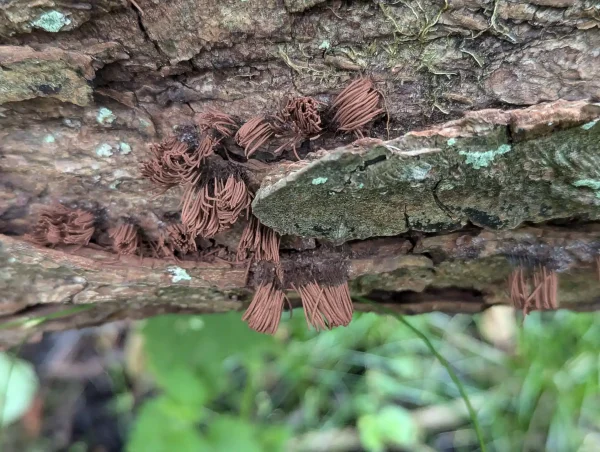
Strumpshaw Fen – 4th August 2024
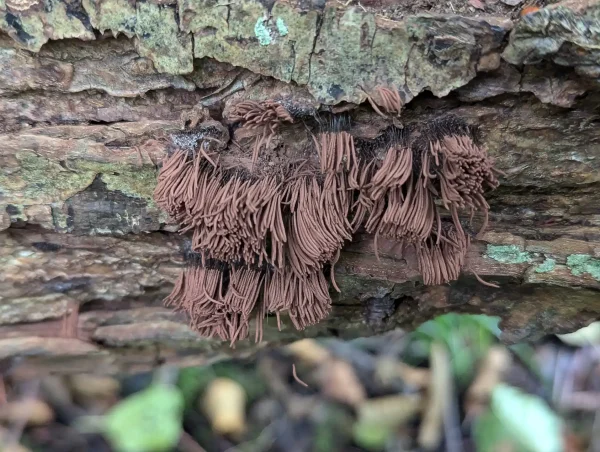
Strumpshaw Fen – 4th August 2024
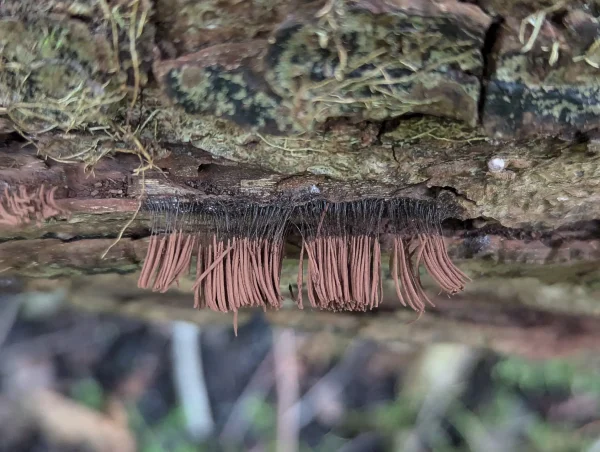
Strumpshaw Fen – 4th August 2024
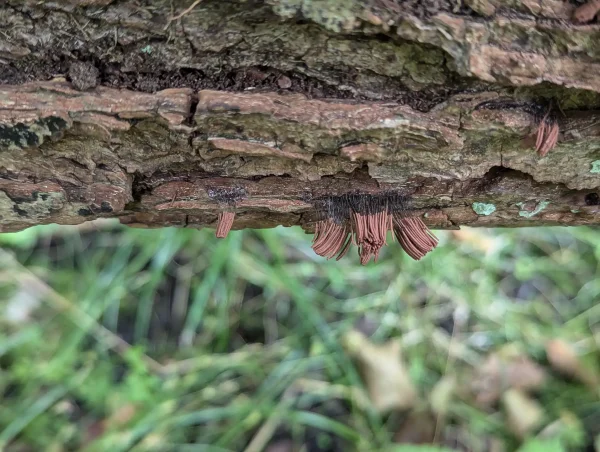
Strumpshaw Fen – 4th August 2024
Caespitose: Growing in clusters or dense tufts – the majority of Stemonitis species are caespitose.
[1] Life Cycles of Myxogastria Stemonitopsis typhina and Stemonitis fusca on Agar Culture – August 2019 – Dan Dai, Benjamin Azu Okorley, yu li, Zhang bo.
[2] Myxomycetes: Biology, Systematics, Biogeography and Ecology – 2nd Edition – edited by Carlos Rojas and Steven L. Stephenson
Strumpshaw Fen is a nature reserve managed by the RSPB adjacent the River Yare, east of Norwich in Norfolk
RSPB Strumpshaw Fen webpage RSPB Strumpshaw Fen Wikipedia entry